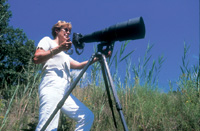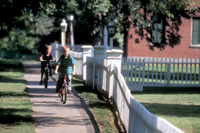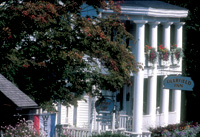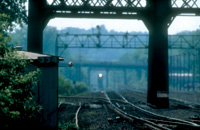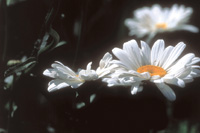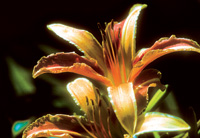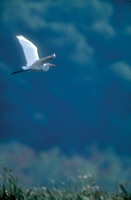Tunnel Vision
A Guide To Using Super Telephoto Autofocus Lenses
There certainly seems to be
a true mystique when it comes to telephoto lenses. In a quick poll taken
in our lab I found out that when a person buys a new single lens reflex
camera the next lens he or she wants is a telephoto. Not much of one,
of course, as folks with youngsters simply don't want to be bothered
with all the trouble of one over the focal length and fast film to capture
it all. Something less than 200mm or so seems to be the magic number. |
|||||||||||||||||||||||||||||||||||||||||||||||||||||||||||||||||||||||||||||||||||||||||||||||||||||||||
Getting Started A cursory look at what's available today in straight, no nonsense super telephotos makes for good reading. Nikon and Canon, for example, are known for their fast reacting telephotos complete with all of the goodies like Silent Wave or Ultrasonic motors. These front-end motors are built into the actual lens and are not driven by the camera body itself, assuring quick and decisive pinpoint focusing. Even today we are on the forefront of new technology in the form of Image Stabilization, Vibration Reduction lenses from Canon and Nikon, along with the new stabilization lens from Sigma. The end result is what we're all looking for--more keepers for our files. |
|||||||||||||||||||||||||||||||||||||||||||||||||||||||||||||||||||||||||||||||||||||||||||||||||||||||||
|
|||||||||||||||||||||||||||||||||||||||||||||||||||||||||||||||||||||||||||||||||||||||||||||||||||||||||
What's Out There |
|||||||||||||||||||||||||||||||||||||||||||||||||||||||||||||||||||||||||||||||||||||||||||||||||||||||||
Sorting Out Your Needs |
|||||||||||||||||||||||||||||||||||||||||||||||||||||||||||||||||||||||||||||||||||||||||||||||||||||||||
Still another avenue to consider
is weight. More glass and larger maximum aperture equals a heavy lens
that costs more money. For instance, in my battery of upper-end telephotos
(in millimeters now, not dollars) you'll find the 300mm f/2.8 AFS,
300mm f/4 AFS, 500mm f/4 AFS, and 600mm f/4 AFS. The reasoning behind
all of this hardware soon becomes clear. For extended travel by airline,
hiking, or from a precarious vantage point, the 300mm f/4 AFS gets the
nod. Light in weight, costing less than a quarter of the money I paid
for the 300mm f/2.8 AFS and containing that famous Nikon ED glass, this
new version is a much improved product especially in the response uptake
for moving subjects. The 300mm f/2.8 AFS comes on-board when (1) I'll
being using my Suburban for travel, (2) using a tripod for both the extra
speed and perhaps a tele-extender, and (3) when I want to employ the use
of the 2x extender handheld or braced on a set of beanbags. |
|||||||||||||||||||||||||||||||||||||||||||||||||||||||||||||||||||||||||||||||||||||||||||||||||||||||||
Last in our series is the 400mm class of super telephotos. Both Nikon and Canon have this model in the f/2.8 version, both autofocus with the 2x extenders to reach a whopping 800mm at f/5.6. However, the sleeper in this series seems to be Canon's 400mm f/5.6. Small and light, folks who have this lens swear by it as one of the best in its category for full action photography, panning, and overall image clarity. Presently, all we need now is for someone to introduce a 400mm f/4 and all the gaps in this 16" focal length will be filled. Moving Up With Film |
|||||||||||||||||||||||||||||||||||||||||||||||||||||||||||||||||||||||||||||||||||||||||||||||||||||||||
My Aching Back! |
|||||||||||||||||||||||||||||||||||||||||||||||||||||||||||||||||||||||||||||||||||||||||||||||||||||||||
Go The Distance
|
|||||||||||||||||||||||||||||||||||||||||||||||||||||||||||||||||||||||||||||||||||||||||||||||||||||||||
